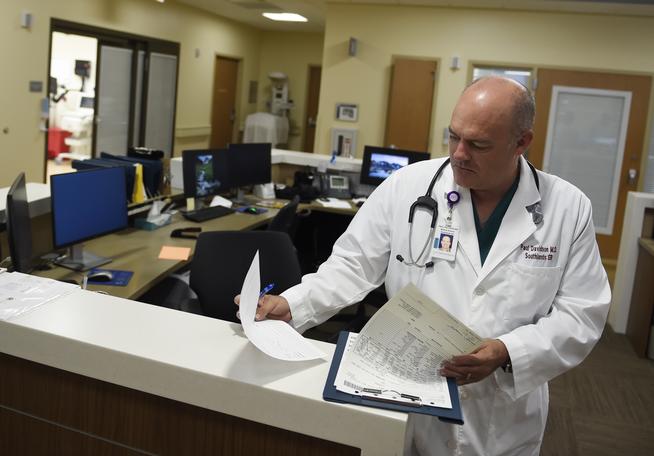Pronouncing death not always easy, expert says
Article originally appeared on Buffalo News
Dr. Albert J. Kirshen has pronounced hundreds of patients dead during a nearly 40-year career in palliative medicine, and he says that decision can be a time-consuming process.
And reaching that decision of whether someone is dead becomes more difficult in a busy emergency room, he said.
“I’m not in a noisy emergency room environment. I’m usually in a calm environment,” said Kirshen, an assistant professor at the University of Toronto Medical School as well as a practitioner since 1978.
He said he checks the neck for a pulse, but if there is not one, he doesn’t stop checking.
“That’s still not good enough. Are they breathing and/or is their heart beating?” he said.
The News reached out to Kirshen about the process of dying and how a physician reaches a conclusion of death following the story reported last week about an Amherst woman who is suing Kaleida and an emergency room doctor. The physician had declared her husband dead and refused to check on her repeated claims that her 46-year-old husband was still alive, based on seeing him breathe, move his arm and legs and open his eyes. When the doctor did check two and a half hours later, he realized that the man had a pulse and was breathing. The man died the next day, and his widow believes he would still be alive if he had been attended to immediately.
Attorneys for the doctors and Kaleida have refused to comment on the case, as has the doctor.
Kirshen would not comment directly on the incident at DeGraff Memorial Hospital in North Tonawanda last year. But he did explain his procedure for declaring someone dead.
He said he stands for one to two minutes watching a person’s chest and face, because a dying person may be breathing very shallowly – with as long as two minutes between breaths.
Kirshen was interviewed shortly after he pronounced an elderly woman dead in her Toronto home Friday afternoon.
When he arrived, Kirshen said, the woman’s family thought she was already dead, but at a glance, Kirshen was able to tell she wasn’t.
“About 15 minutes later, I was convinced she had stopped breathing. At this time, I could not feel a pulse in her neck and I listened to her chest and I wasn’t 100 percent sure. So I waited another five minutes,” Kirshen said.
That’s when Kirshen declared the woman had expired. But he recognized that his situation was probably very different than most emergency room situations.
“In an emergency room, it can be very difficult,” he said, “but if you’ve been doing CPR, you have paddles in your hand usually, and you have a cardiac monitor in your hand.”
He said a patient who has no apparent heart rhythm in such a situation still may not be dead.
“It could be a very fine form of ventricular tachycardia or ventricular fibrillation, and there are cases that for sure will fool you,” Kirshen said.
When Michael E. Cleveland was seen moving repeatedly in a room at DeGraff Hospital last October, Dr. Gregory C. Perry allegedly told his family he had “life expelling from his body.”
Orleans County Coroner Scott M. Schmidt, president of the New York State Association of County Coroners and Medical Examiners, said that muscle movement can occur after death.
“Just muscles relaxing, that kind of thing,” he said. “But if this man was writhing around in the emergency room, not involuntary muscle movements but moving around, that would be an indication at the very least to take another look at this guy.”
Schmidt said relaxing muscles can include a release of the diaphragm after the last breath.
“People can develop muscle twitching after they’re dead,” Kirshen conceded. “True moving of the limbs, I don’t recall ever seeing in 40 years.”
Schmidt, a funeral director as well as being a coroner for 25 years, said he checks bodies in both of his jobs for heartbeat and breathing.
He commended Niagara County Coroner Joseph V. Mantione for backing out of the case and requesting Perry to check Cleveland’s vital signs.




